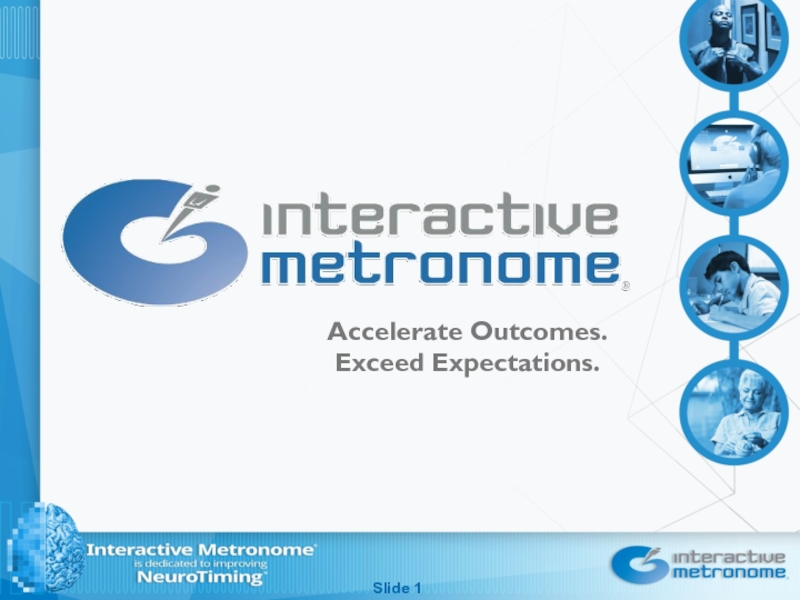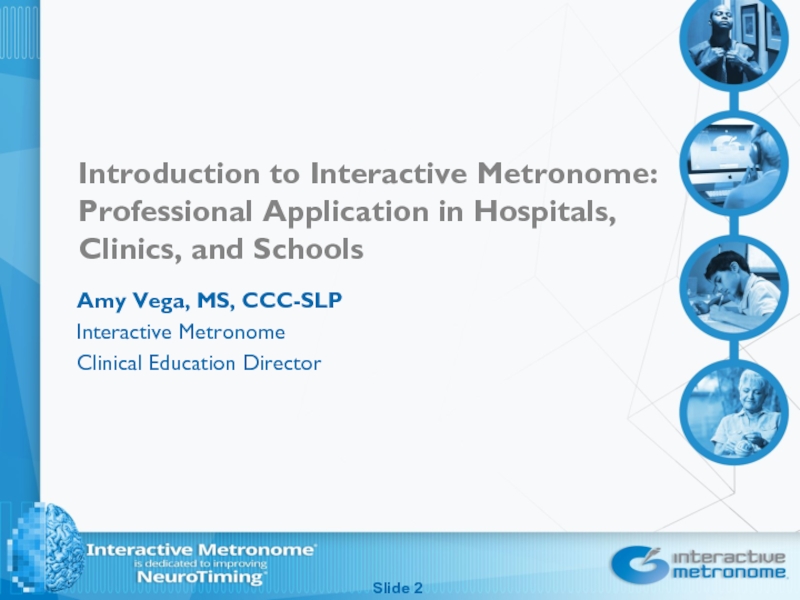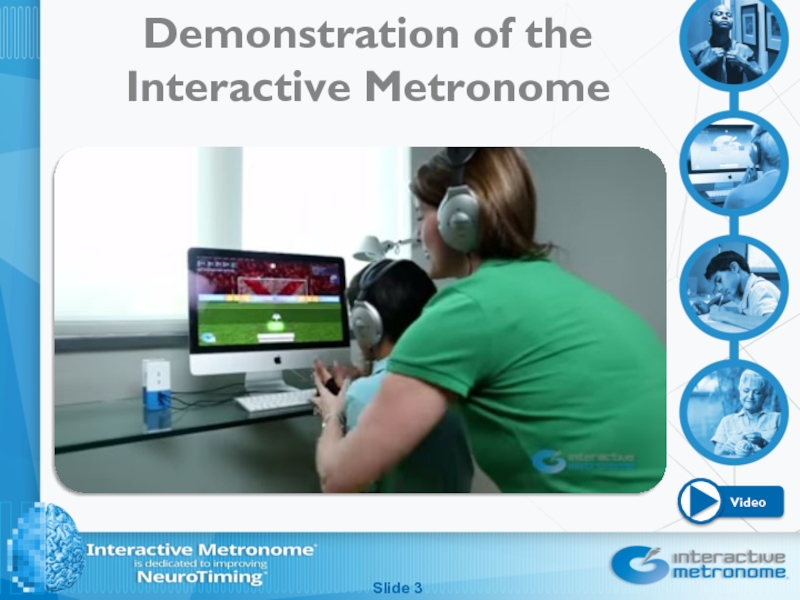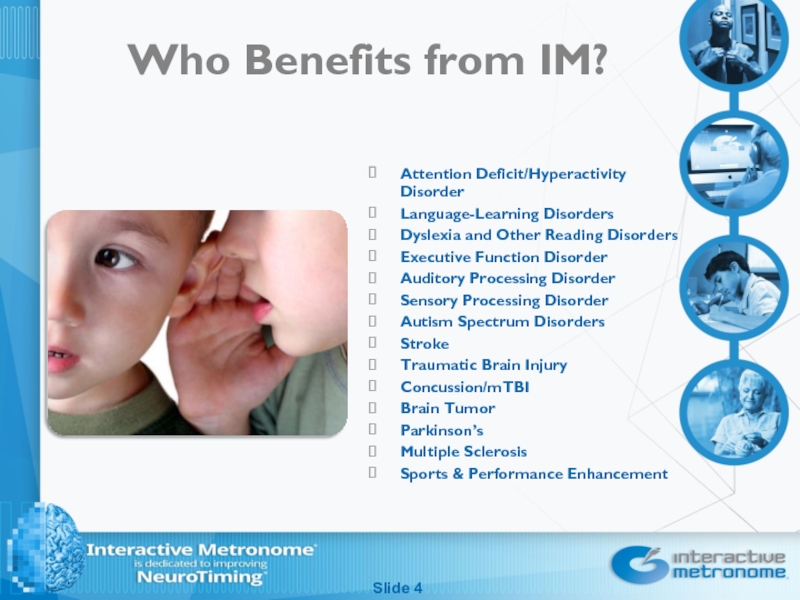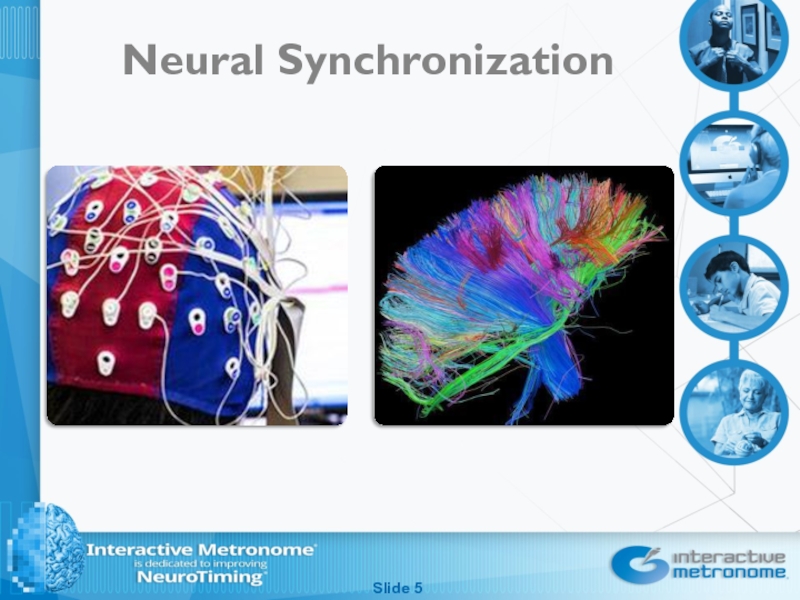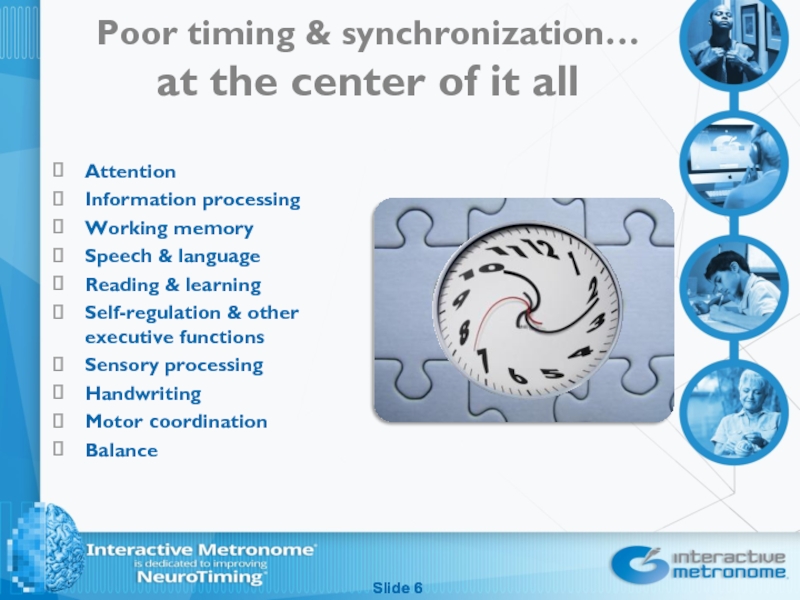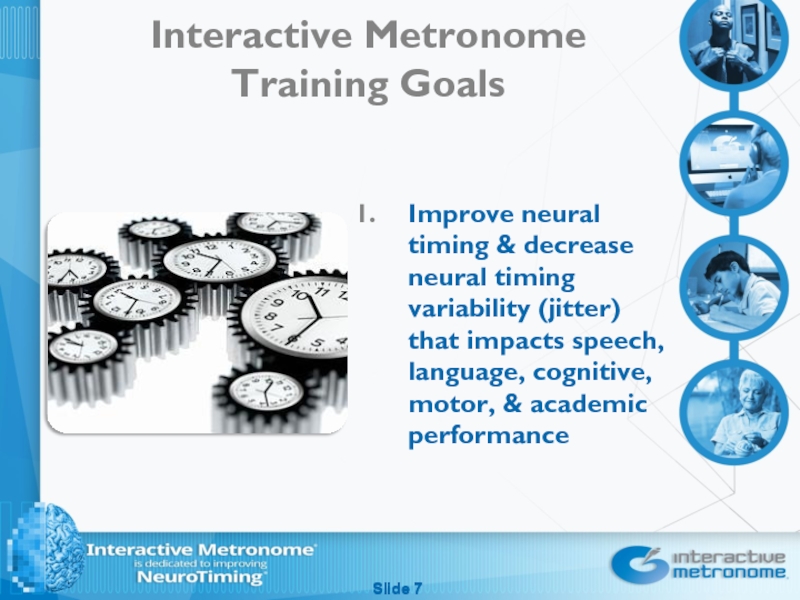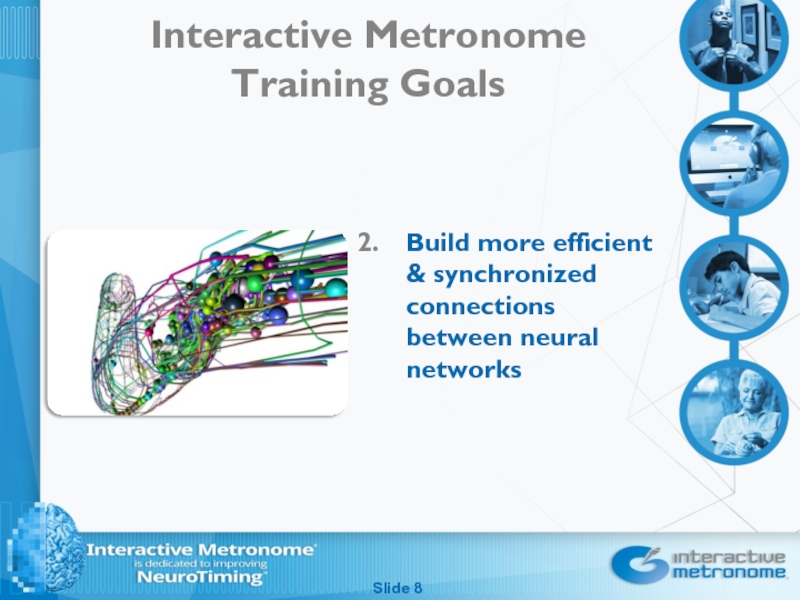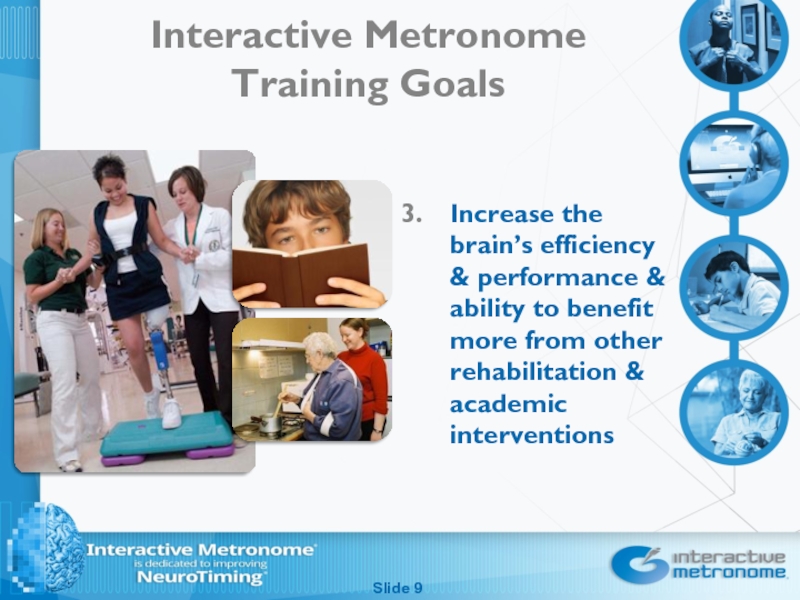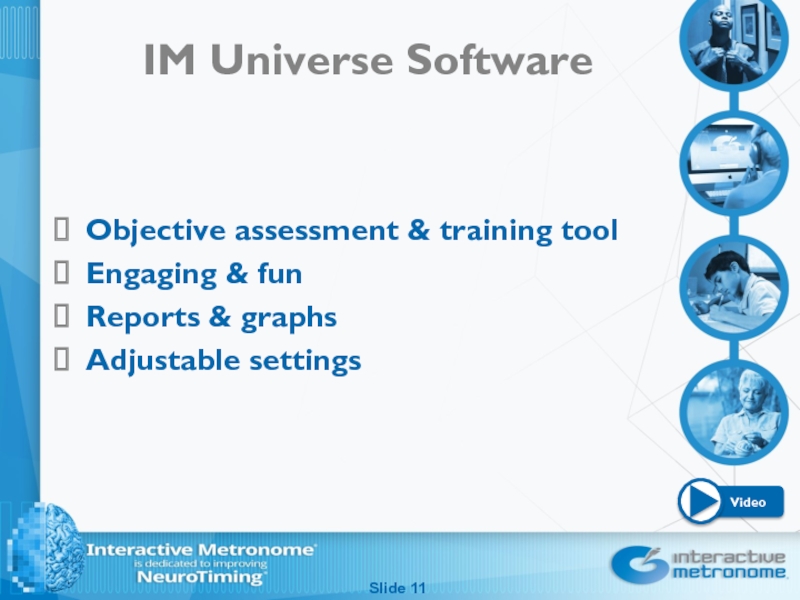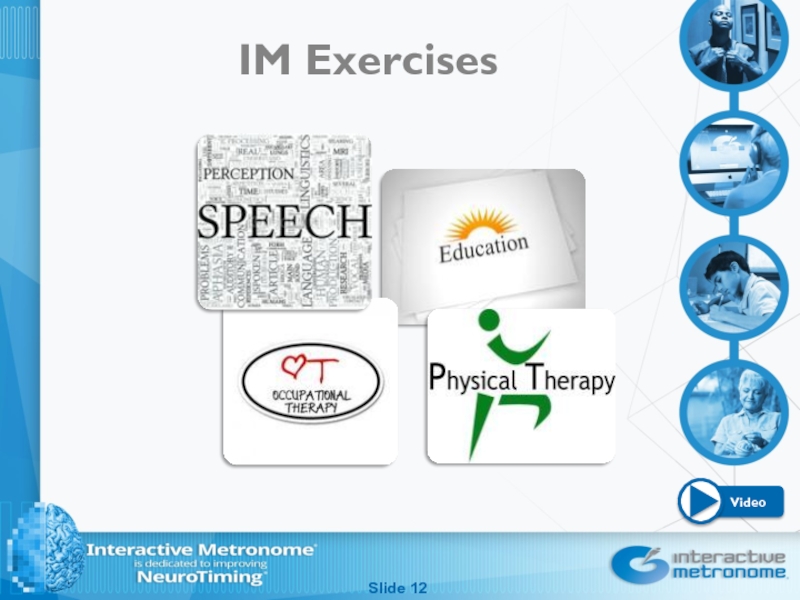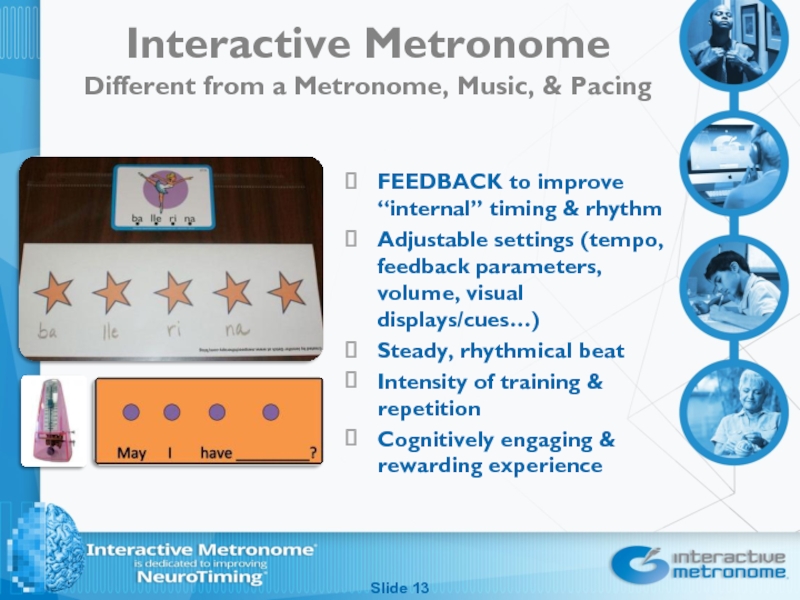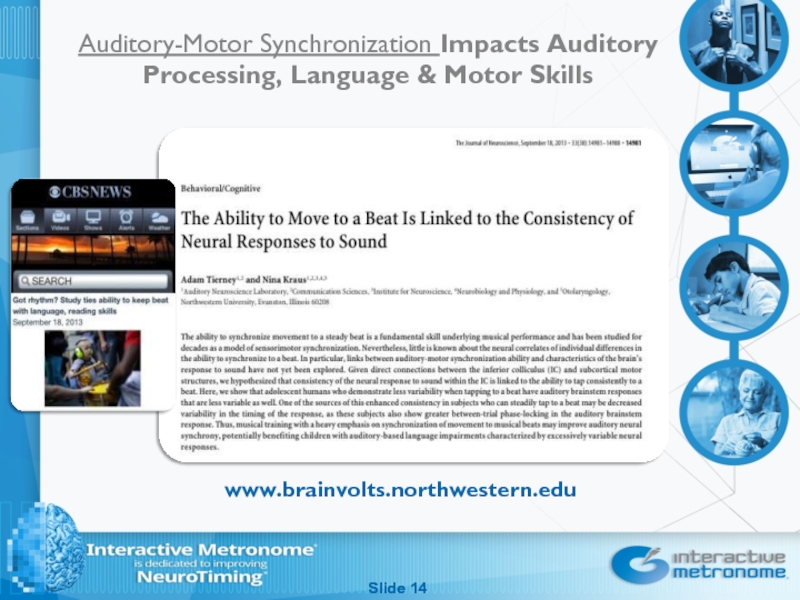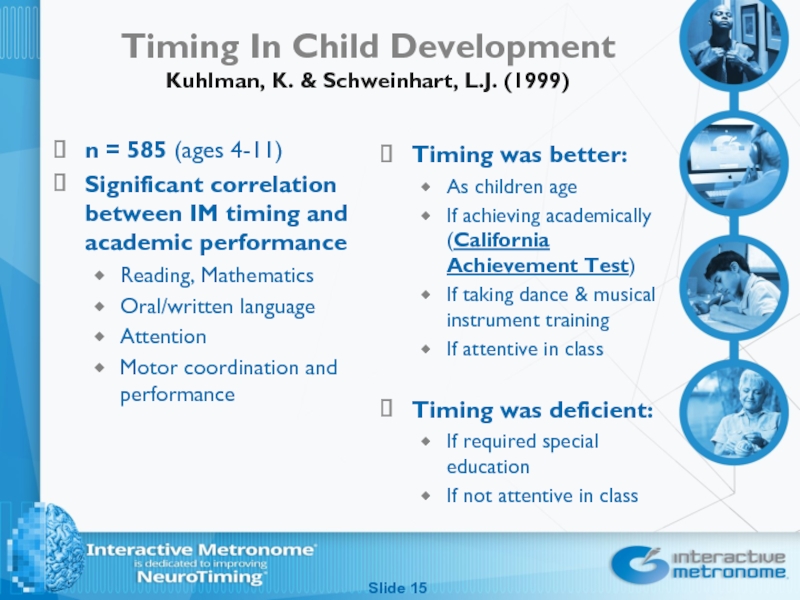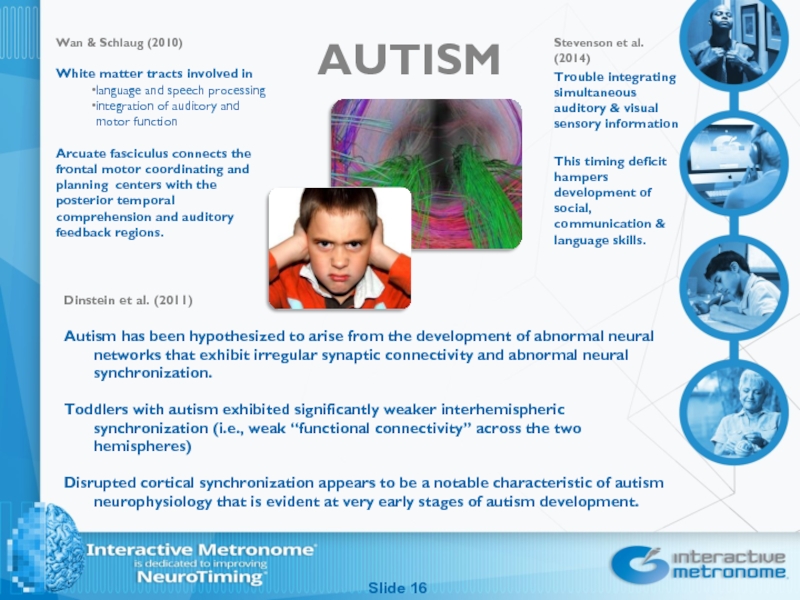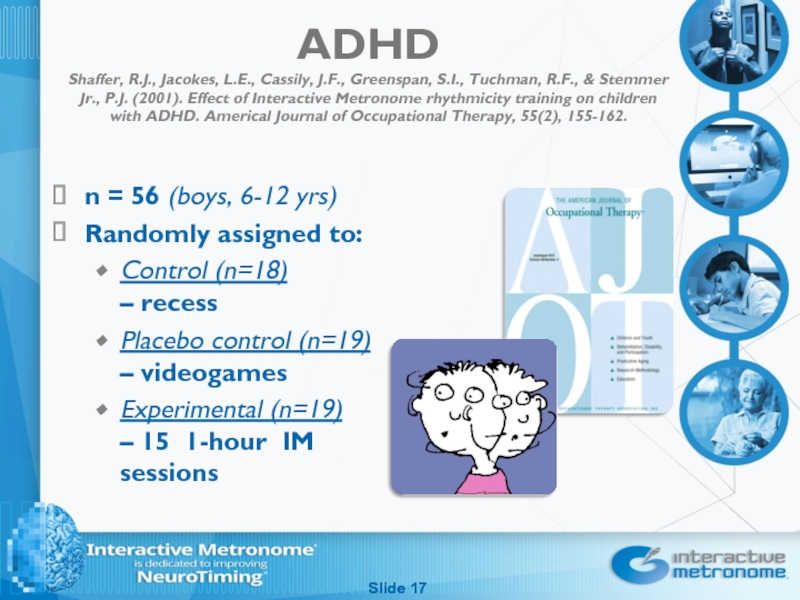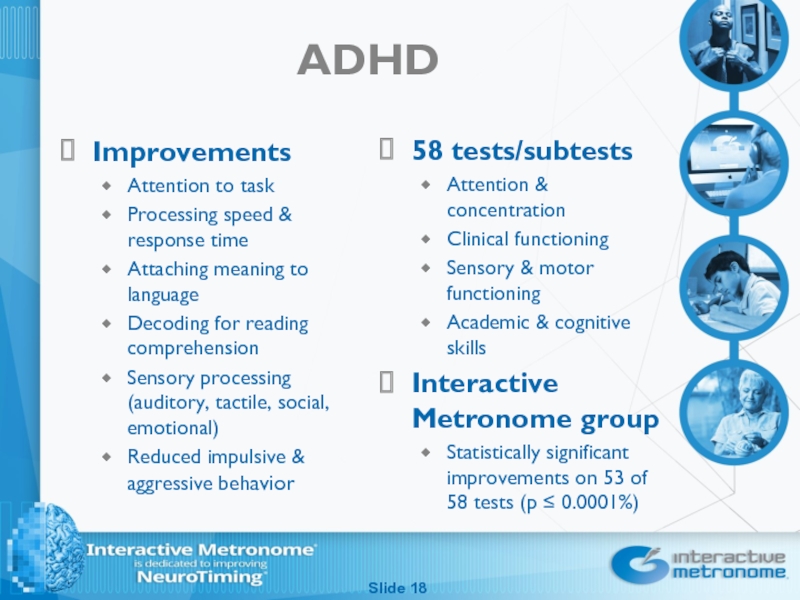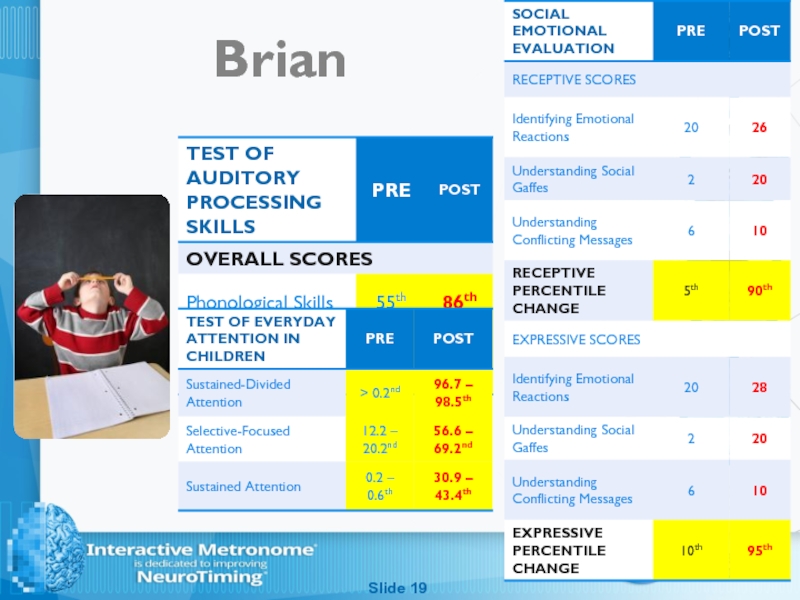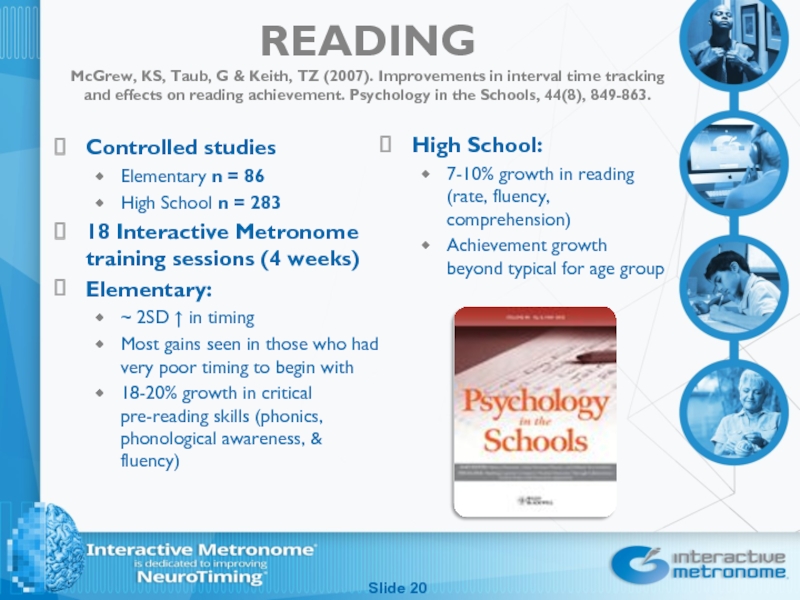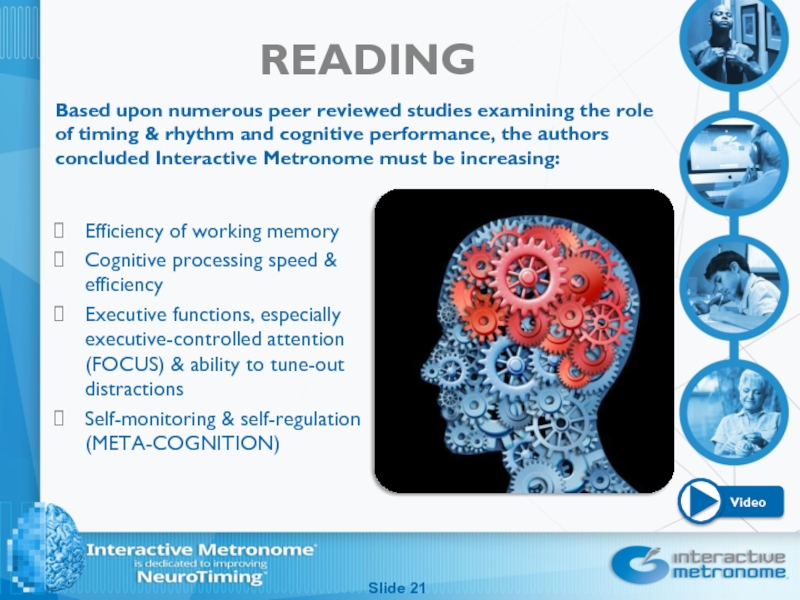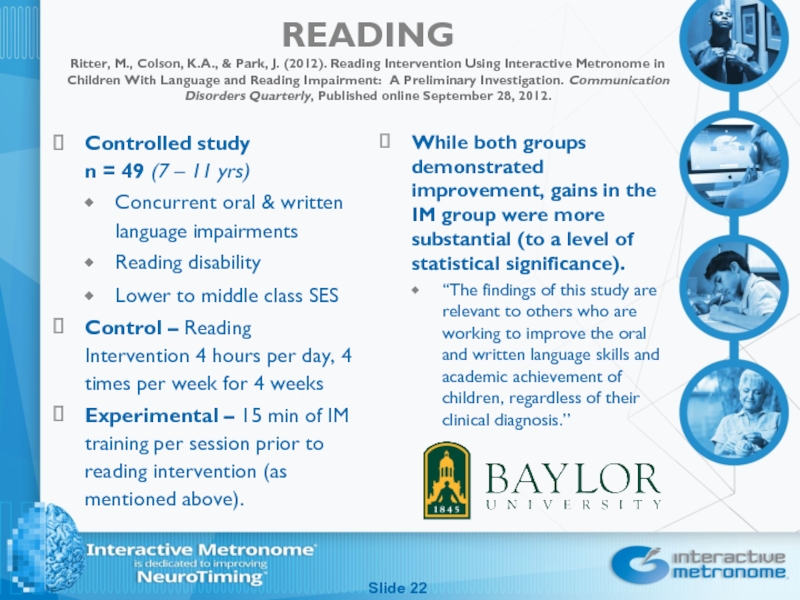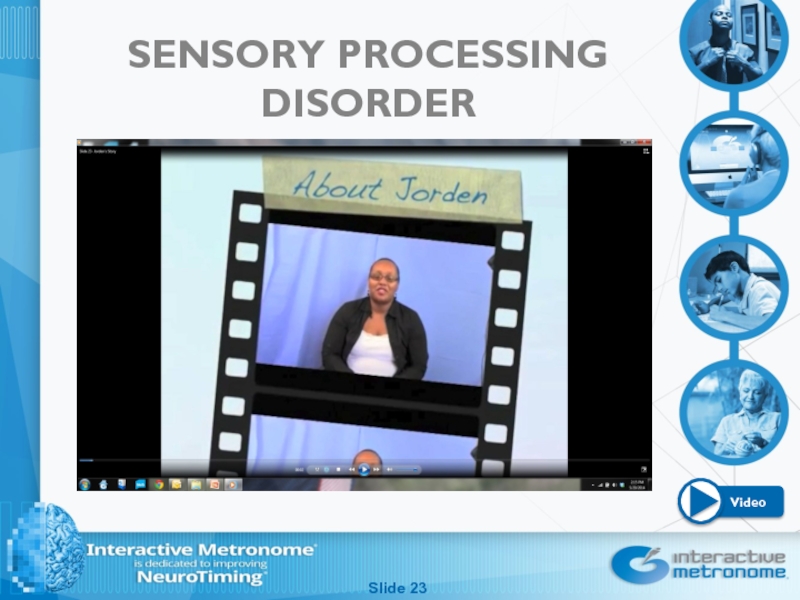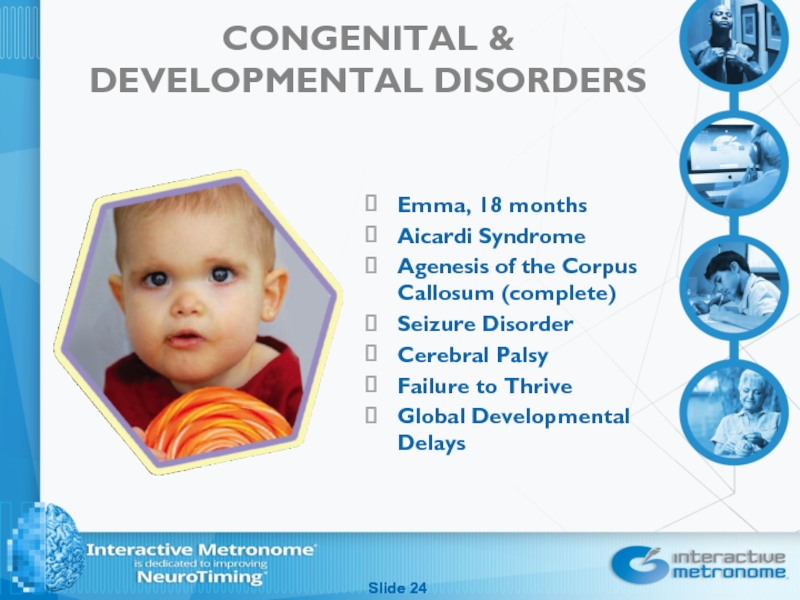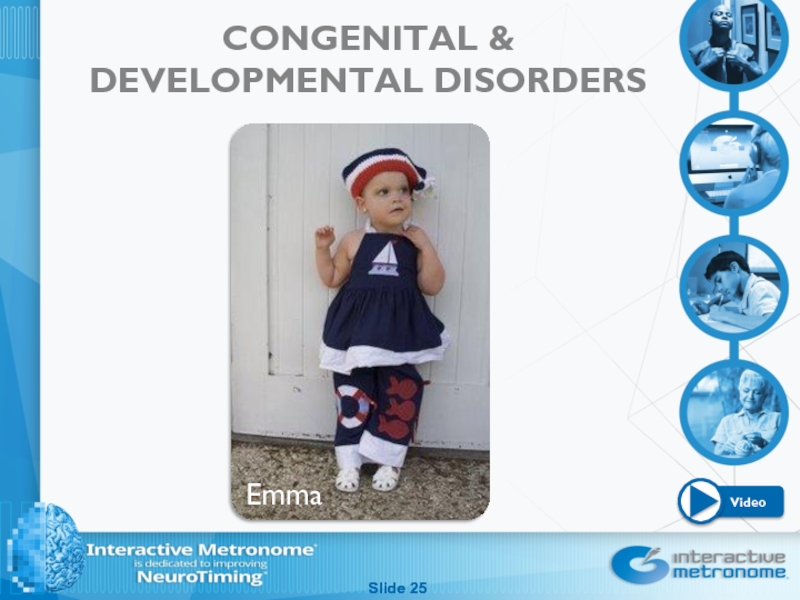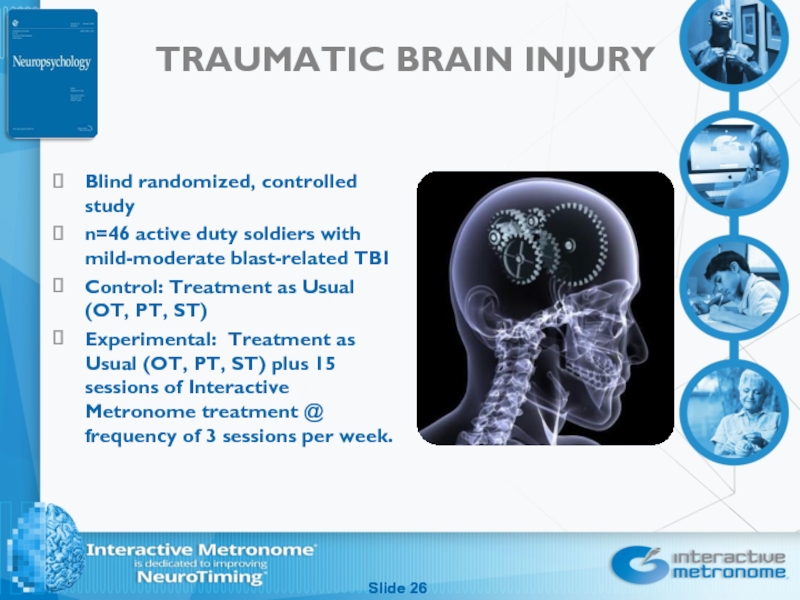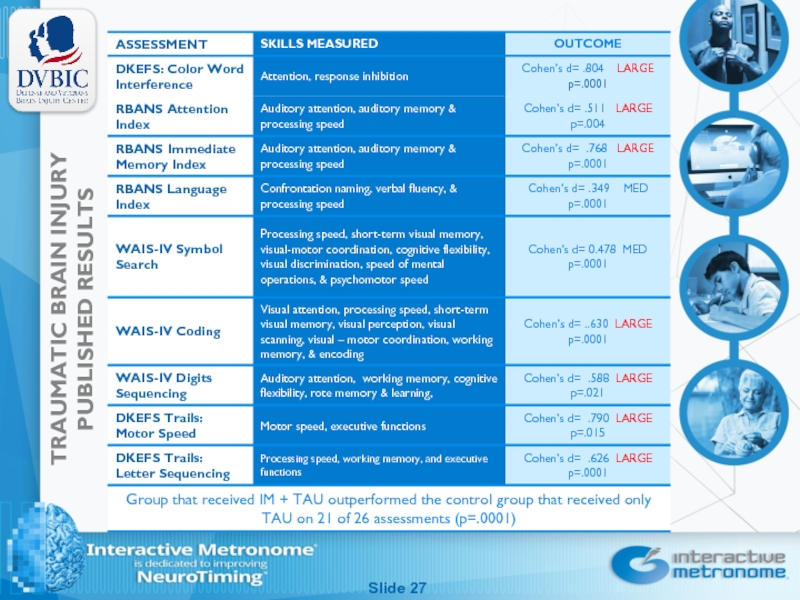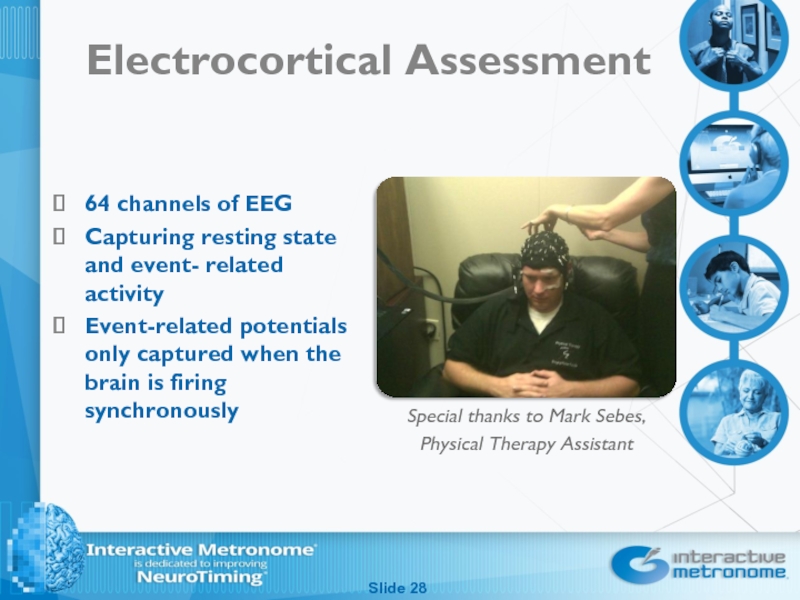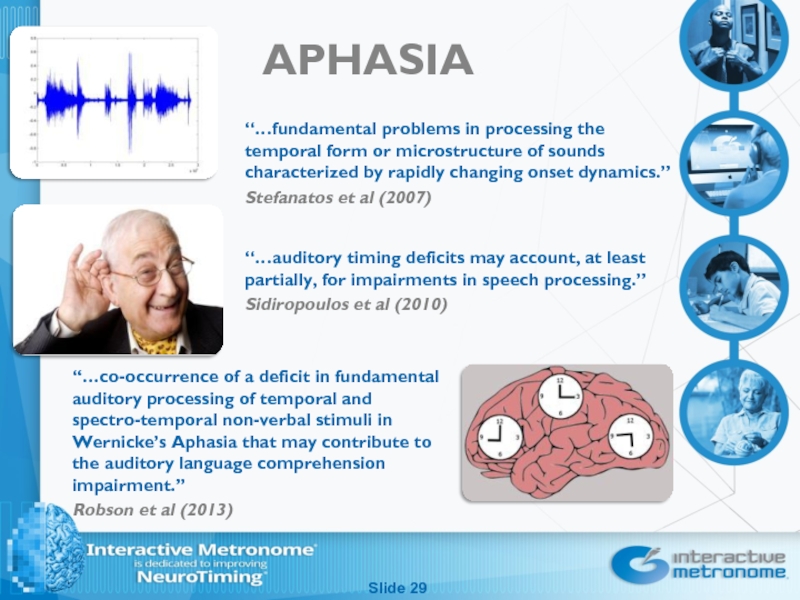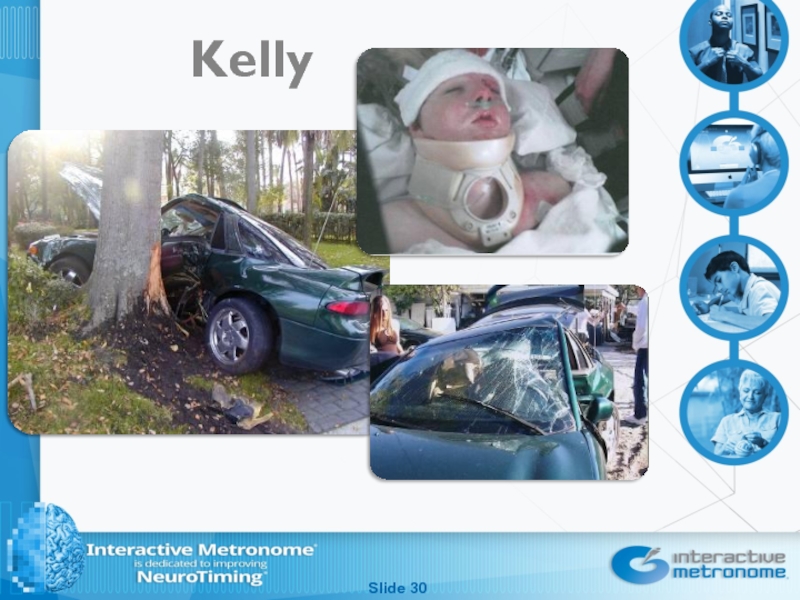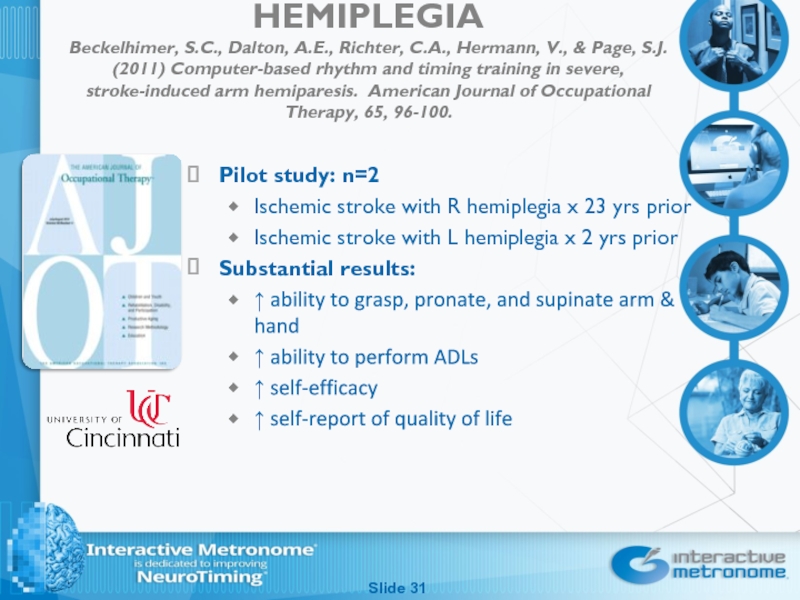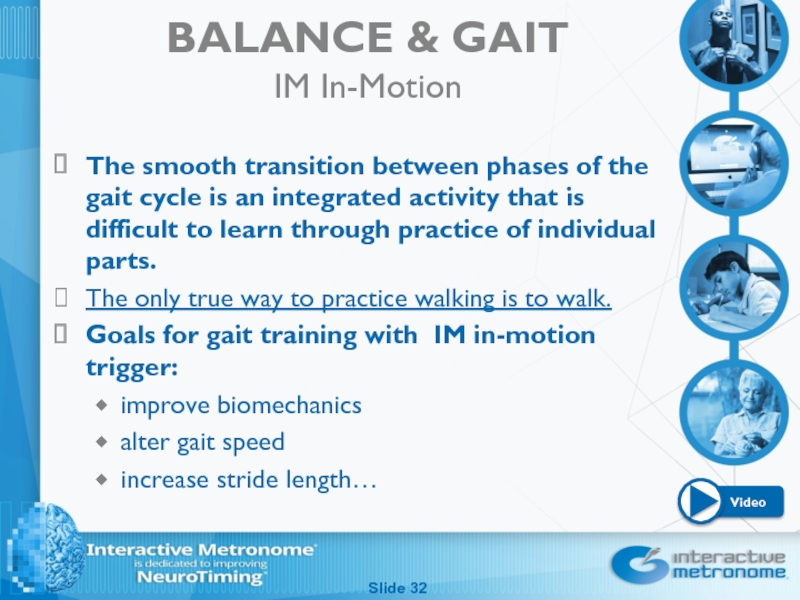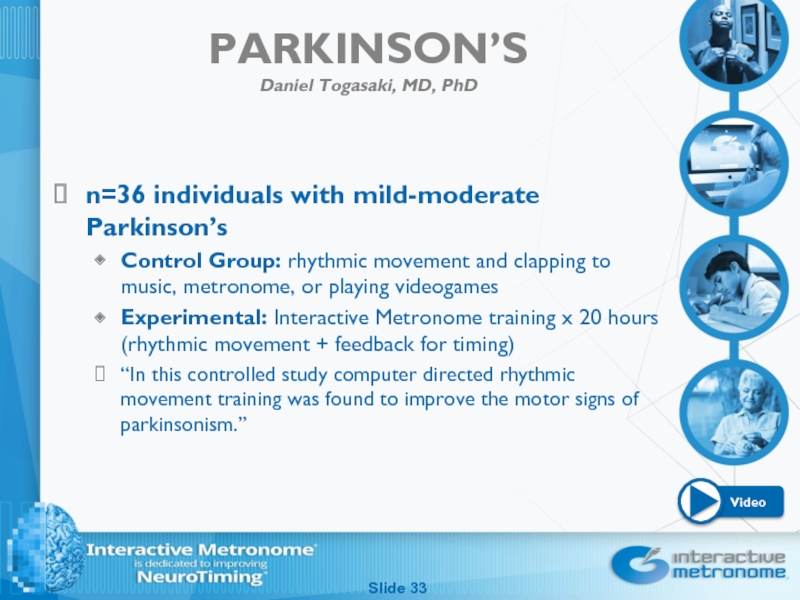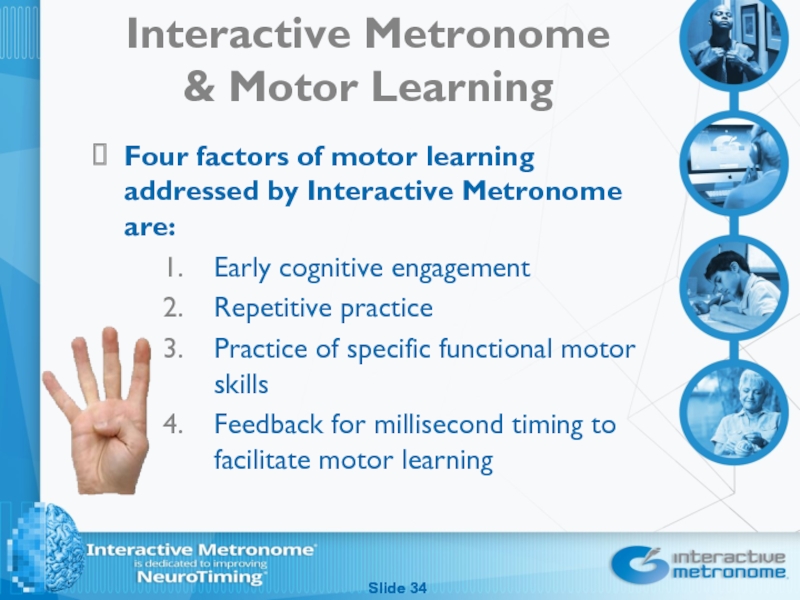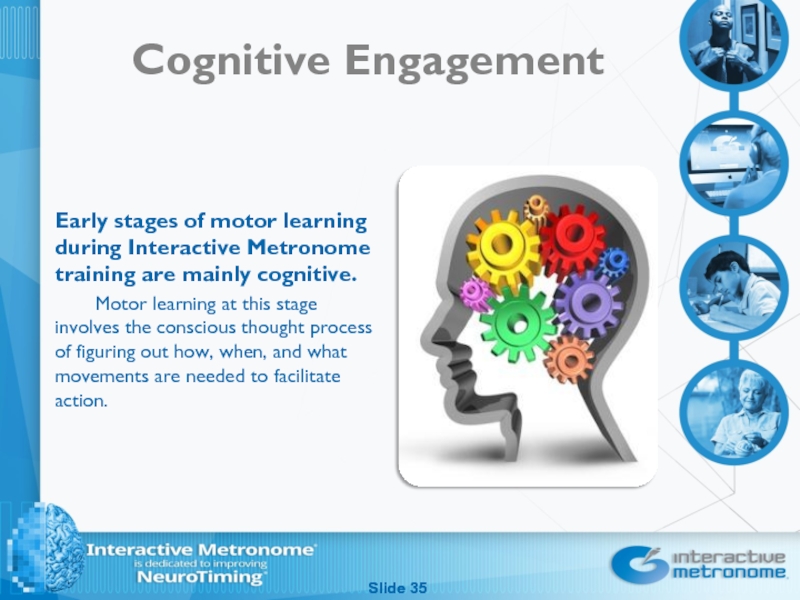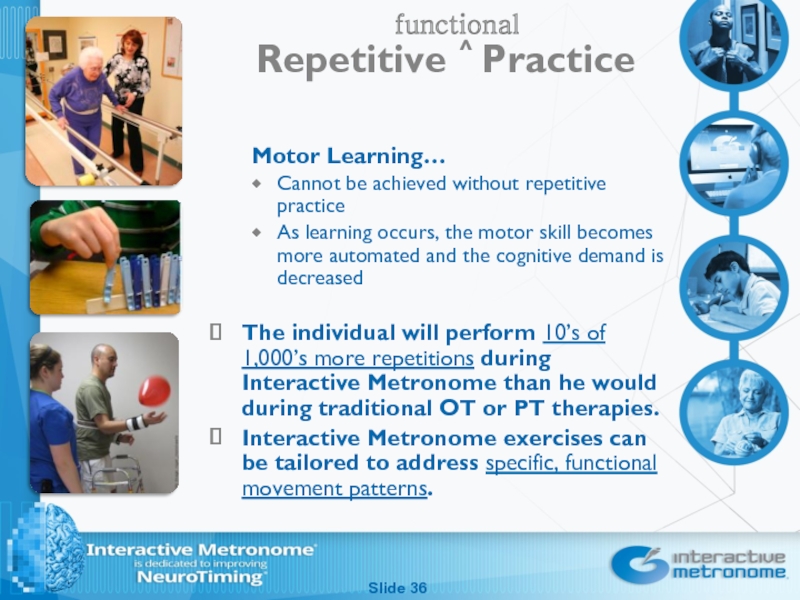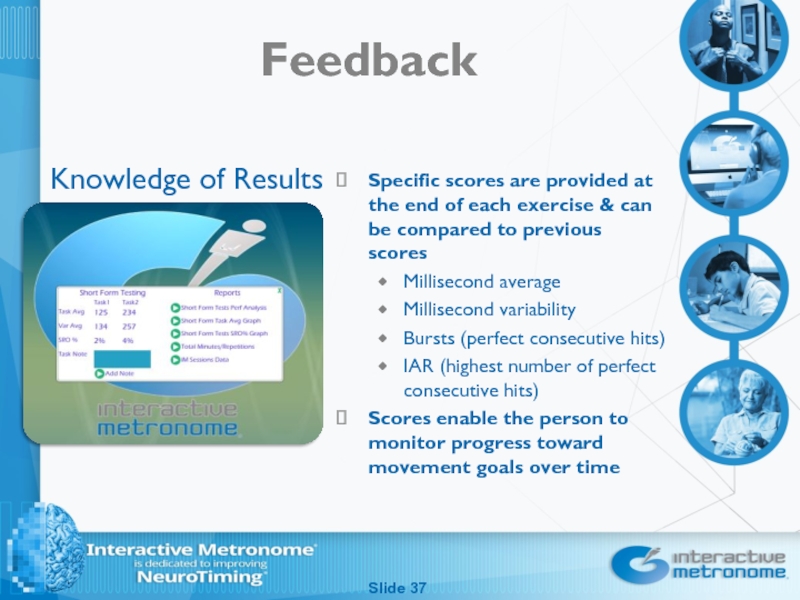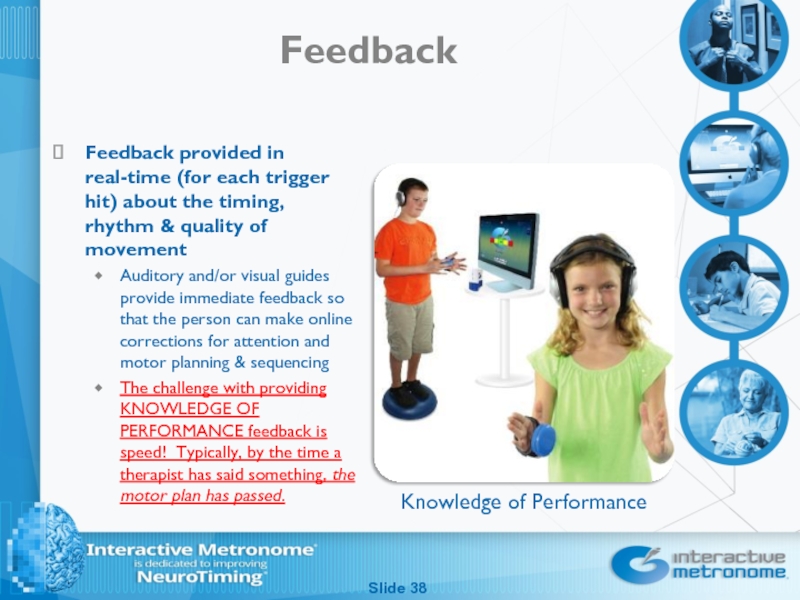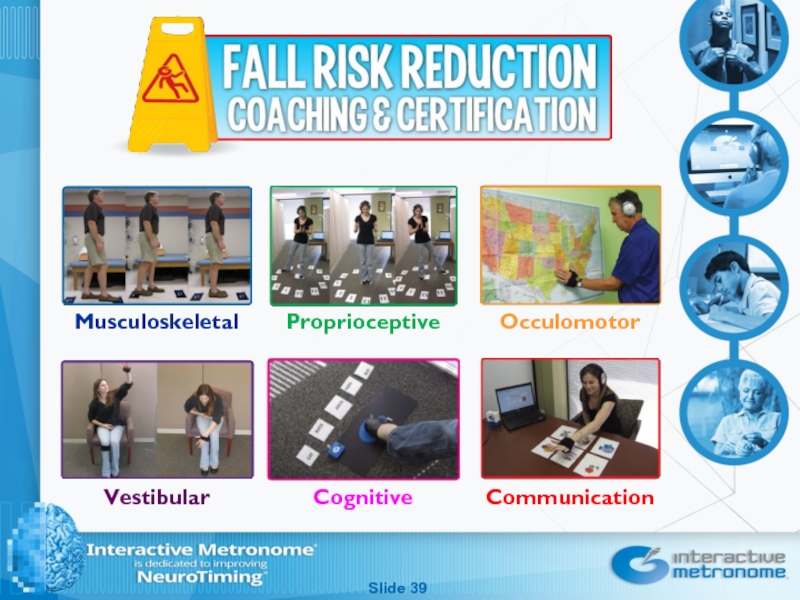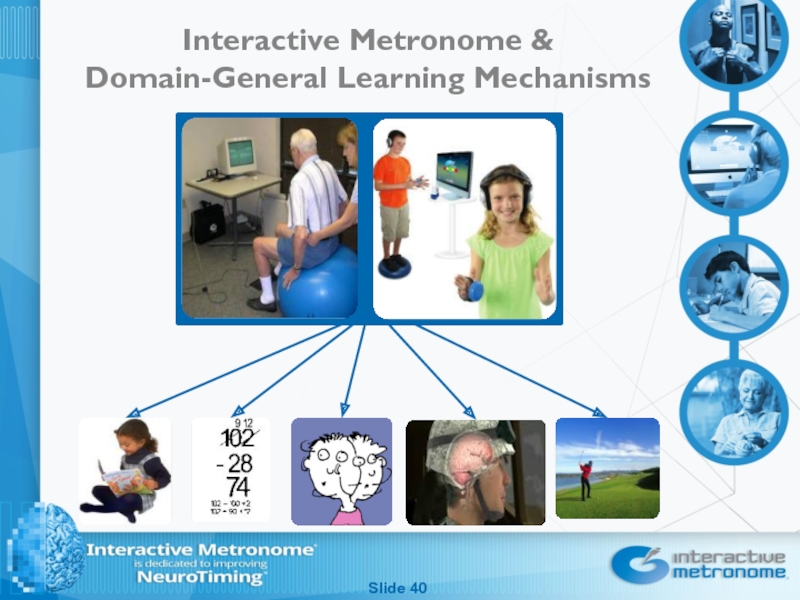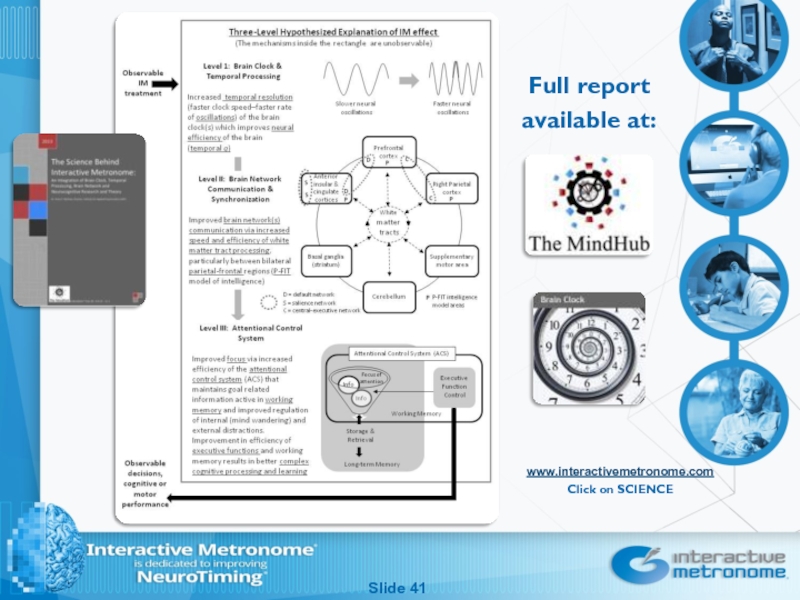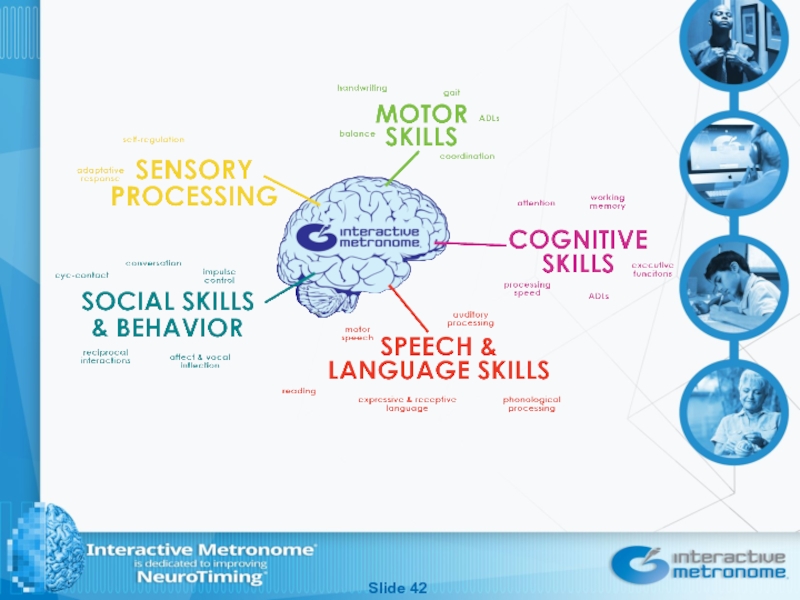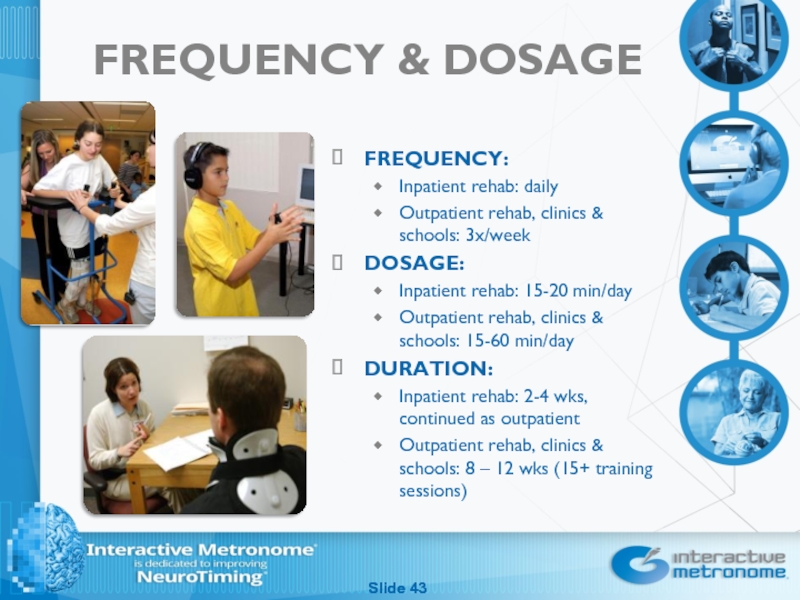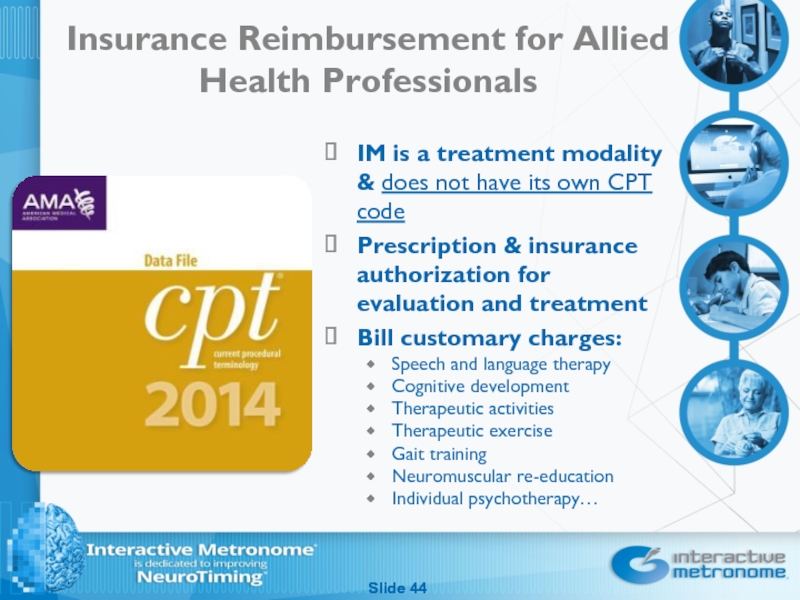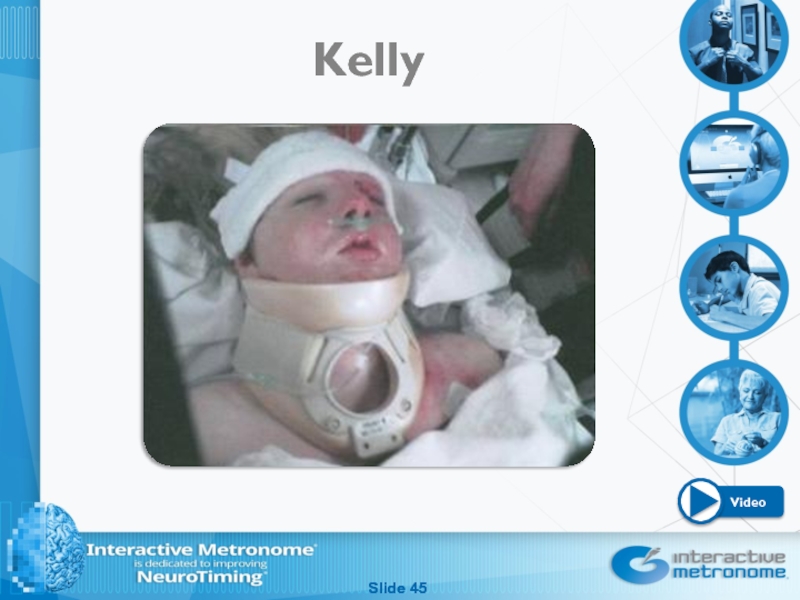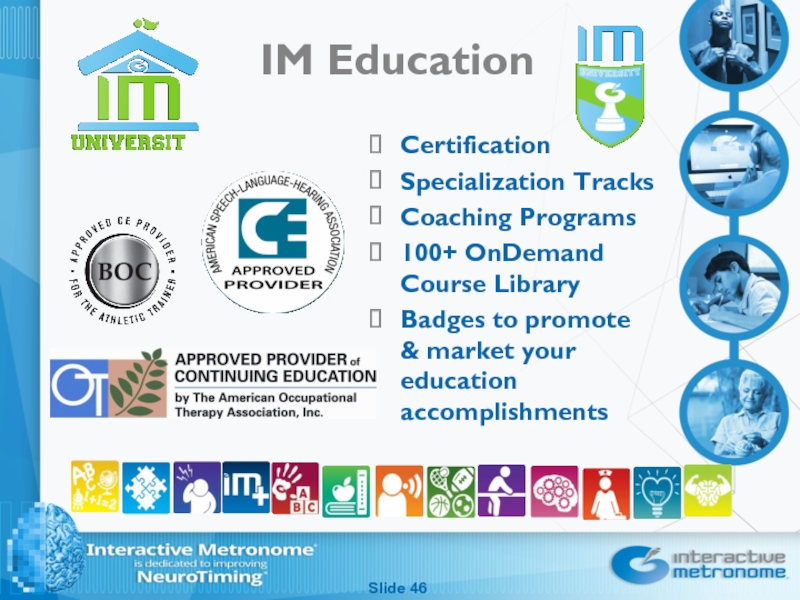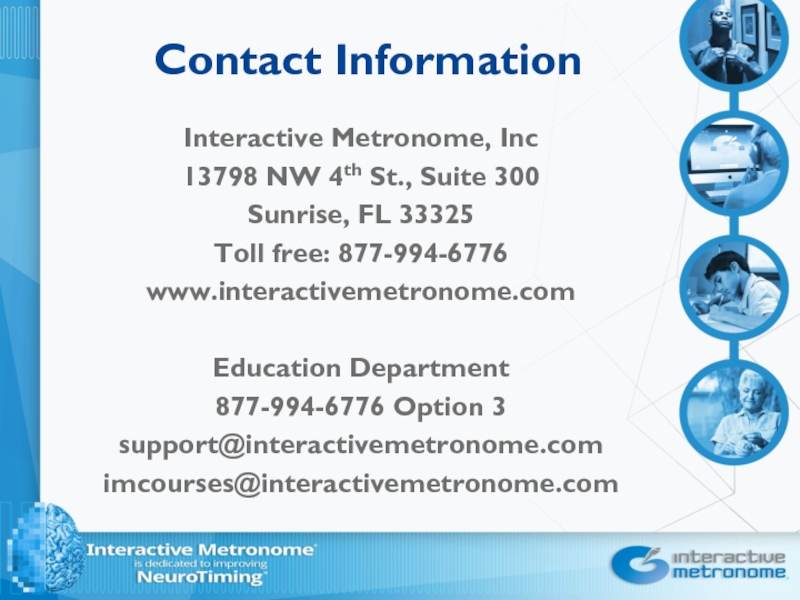- Главная
- Разное
- Дизайн
- Бизнес и предпринимательство
- Аналитика
- Образование
- Развлечения
- Красота и здоровье
- Финансы
- Государство
- Путешествия
- Спорт
- Недвижимость
- Армия
- Графика
- Культурология
- Еда и кулинария
- Лингвистика
- Английский язык
- Астрономия
- Алгебра
- Биология
- География
- Детские презентации
- Информатика
- История
- Литература
- Маркетинг
- Математика
- Медицина
- Менеджмент
- Музыка
- МХК
- Немецкий язык
- ОБЖ
- Обществознание
- Окружающий мир
- Педагогика
- Русский язык
- Технология
- Физика
- Философия
- Химия
- Шаблоны, картинки для презентаций
- Экология
- Экономика
- Юриспруденция
Introduction to interactive metronome: professional application in hospitals, clinics, and schools презентация
Содержание
- 1. Introduction to interactive metronome: professional application in hospitals, clinics, and schools
- 2. Introduction to Interactive Metronome: Professional Application in
- 3. Demonstration of the Interactive Metronome Slide
- 4. Who Benefits from IM? Attention Deficit/Hyperactivity Disorder
- 5. Neural Synchronization Slide
- 6. Poor timing & synchronization… at the center
- 7. Interactive Metronome Training Goals Improve neural
- 8. Interactive Metronome Training Goals Build more
- 9. Interactive Metronome Training Goals Increase the
- 10. Interactive Metronome Hardware Master Control Unit with
- 11. IM Universe Software Objective assessment
- 12. IM Exercises Slide
- 13. Interactive Metronome Different from a Metronome, Music,
- 14. Auditory-Motor Synchronization Impacts Auditory Processing, Language &
- 15. Timing In Child Development Kuhlman, K. &
- 16. AUTISM Slide Dinstein et al.
- 17. ADHD Shaffer, R.J., Jacokes, L.E., Cassily, J.F.,
- 18. ADHD Improvements Attention to task Processing speed
- 19. Brian Slide
- 20. READING McGrew, KS, Taub, G & Keith,
- 21. Slide READING Based upon numerous
- 22. Slide READING Ritter, M., Colson,
- 23. SENSORY PROCESSING DISORDER Slide
- 24. CONGENITAL & DEVELOPMENTAL DISORDERS Emma, 18
- 25. CONGENITAL & DEVELOPMENTAL DISORDERS Slide Slide Emma
- 26. TRAUMATIC BRAIN INJURY Blind randomized, controlled study
- 27. Slide TRAUMATIC BRAIN INJURY PUBLISHED RESULTS
- 28. Electrocortical Assessment 64 channels of EEG Capturing
- 29. APHASIA “…fundamental problems in processing the temporal
- 30. Kelly Slide
- 31. HEMIPLEGIA Beckelhimer, S.C., Dalton, A.E., Richter, C.A.,
- 32. BALANCE & GAIT IM In-Motion The
- 33. PARKINSON’S Daniel Togasaki, MD, PhD n=36 individuals
- 34. Interactive Metronome & Motor Learning Four
- 35. Cognitive Engagement Early stages of motor learning
- 36. Repetitive ^ Practice Motor Learning… Cannot be
- 37. Feedback Slide Knowledge of Results
- 38. Feedback Feedback provided in real-time
- 39. Slide
- 40. Interactive Metronome & Domain-General Learning Mechanisms Slide
- 41. Full report available at: www.interactivemetronome.com Click on SCIENCE Slide
- 42. Slide
- 43. FREQUENCY & DOSAGE Slide
- 44. Insurance Reimbursement for Allied Health Professionals IM
- 45. Kelly Slide Slide
- 46. IM Education Certification Specialization Tracks Coaching Programs
- 47. Contact Information Interactive Metronome, Inc 13798 NW
Слайд 2Introduction to Interactive Metronome:
Professional Application in Hospitals, Clinics, and Schools
Amy Vega,
Interactive Metronome
Clinical Education Director
Slide
Слайд 4Who Benefits from IM?
Attention Deficit/Hyperactivity Disorder
Language-Learning Disorders
Dyslexia and Other Reading Disorders
Executive
Auditory Processing Disorder
Sensory Processing Disorder
Autism Spectrum Disorders
Stroke
Traumatic Brain Injury
Concussion/mTBI
Brain Tumor
Parkinson’s
Multiple Sclerosis
Sports & Performance Enhancement
Slide
Слайд 6Poor timing & synchronization…
at the center of it all
Attention
Information processing
Working memory
Speech
Reading & learning
Self-regulation & other executive functions
Sensory processing
Handwriting
Motor coordination
Balance
Slide
Slide
Слайд 7Interactive Metronome
Training Goals
Improve neural timing & decrease neural timing variability
Slide
Slide
Слайд 8Interactive Metronome
Training Goals
Build more efficient & synchronized connections between neural
Slide
Слайд 9Interactive Metronome
Training Goals
Increase the brain’s efficiency & performance & ability
Slide
Слайд 10Interactive Metronome Hardware
Master Control Unit with USB cord
Headphones
Button Switch
Tap Mat
In-Motion Insole Triggers (IM Pro only)
Slide
Слайд 11
IM Universe Software
Objective assessment & training tool
Engaging & fun
Reports &
Adjustable settings
Slide
Слайд 13Interactive Metronome
Different from a Metronome, Music, & Pacing
FEEDBACK to improve “internal”
Adjustable settings (tempo, feedback parameters, volume, visual displays/cues…)
Steady, rhythmical beat
Intensity of training & repetition
Cognitively engaging & rewarding experience
Slide
Слайд 14Auditory-Motor Synchronization Impacts Auditory Processing, Language & Motor Skills
Slide
www.brainvolts.northwestern.edu
Slide
Слайд 15Timing In Child Development
Kuhlman, K. & Schweinhart, L.J. (1999)
n = 585
Significant correlation between IM timing and academic performance
Reading, Mathematics
Oral/written language
Attention
Motor coordination and performance
Timing was better:
As children age
If achieving academically (California Achievement Test)
If taking dance & musical instrument training
If attentive in class
Timing was deficient:
If required special education
If not attentive in class
Slide
Слайд 16AUTISM
Slide
Dinstein et al. (2011)
Autism has been hypothesized to arise
Toddlers with autism exhibited significantly weaker interhemispheric synchronization (i.e., weak ‘‘functional connectivity’’ across the two hemispheres)
Disrupted cortical synchronization appears to be a notable characteristic of autism neurophysiology that is evident at very early stages of autism development.
Wan & Schlaug (2010)
White matter tracts involved in
language and speech processing
integration of auditory and motor function
Arcuate fasciculus connects the frontal motor coordinating and planning centers with the posterior temporal comprehension and auditory feedback regions.
Stevenson et al. (2014)
Trouble integrating simultaneous auditory & visual sensory information
This timing deficit hampers development of social, communication & language skills.
Слайд 17ADHD Shaffer, R.J., Jacokes, L.E., Cassily, J.F., Greenspan, S.I., Tuchman, R.F., &
n = 56 (boys, 6-12 yrs)
Randomly assigned to:
Control (n=18) – recess
Placebo control (n=19) – videogames
Experimental (n=19) – 15 1-hour IM sessions
Slide
Slide
Слайд 18ADHD
Improvements
Attention to task
Processing speed & response time
Attaching meaning to language
Decoding for
Sensory processing (auditory, tactile, social, emotional)
Reduced impulsive & aggressive behavior
58 tests/subtests
Attention & concentration
Clinical functioning
Sensory & motor functioning
Academic & cognitive skills
Interactive Metronome group
Statistically significant improvements on 53 of 58 tests (p ≤ 0.0001%)
Slide
Слайд 20READING McGrew, KS, Taub, G & Keith, TZ (2007). Improvements in interval
Controlled studies
Elementary n = 86
High School n = 283
18 Interactive Metronome training sessions (4 weeks)
Elementary:
~ 2SD ↑ in timing
Most gains seen in those who had very poor timing to begin with
18-20% growth in critical pre-reading skills (phonics, phonological awareness, & fluency)
High School:
7-10% growth in reading (rate, fluency, comprehension)
Achievement growth beyond typical for age group
Slide
Слайд 21
Slide
READING
Based upon numerous peer reviewed studies examining the role of
Efficiency of working memory
Cognitive processing speed & efficiency
Executive functions, especially executive-controlled attention (FOCUS) & ability to tune-out distractions
Self-monitoring & self-regulation (META-COGNITION)
Слайд 22
Slide
READING
Ritter, M., Colson, K.A., & Park, J. (2012). Reading Intervention
Controlled study n = 49 (7 – 11 yrs)
Concurrent oral & written language impairments
Reading disability
Lower to middle class SES
Control – Reading Intervention 4 hours per day, 4 times per week for 4 weeks
Experimental – 15 min of IM training per session prior to reading intervention (as mentioned above).
While both groups demonstrated improvement, gains in the IM group were more substantial (to a level of statistical significance).
“The findings of this study are relevant to others who are working to improve the oral and written language skills and academic achievement of children, regardless of their clinical diagnosis.”
Слайд 24CONGENITAL & DEVELOPMENTAL DISORDERS
Emma, 18 months
Aicardi Syndrome
Agenesis of the Corpus
Seizure Disorder
Cerebral Palsy
Failure to Thrive
Global Developmental Delays
Slide
Slide
Слайд 26TRAUMATIC BRAIN INJURY
Blind randomized, controlled study
n=46 active duty soldiers with mild-moderate
Control: Treatment as Usual (OT, PT, ST)
Experimental: Treatment as Usual (OT, PT, ST) plus 15 sessions of Interactive Metronome treatment @ frequency of 3 sessions per week.
Slide
Slide
Слайд 28Electrocortical Assessment
64 channels of EEG
Capturing resting state and event- related activity
Event-related
Slide
Special thanks to Mark Sebes,
Physical Therapy Assistant
Слайд 29APHASIA
“…fundamental problems in processing the temporal form or microstructure of sounds
Stefanatos et al (2007)
“…auditory timing deficits may account, at least partially, for impairments in speech processing.”
Sidiropoulos et al (2010)
“…co-occurrence of a deficit in fundamental auditory processing of temporal and spectro-temporal non-verbal stimuli in Wernicke’s Aphasia that may contribute to the auditory language comprehension impairment.”
Robson et al (2013)
Slide
Слайд 31HEMIPLEGIA Beckelhimer, S.C., Dalton, A.E., Richter, C.A., Hermann, V., & Page, S.J.
Pilot study: n=2
Ischemic stroke with R hemiplegia x 23 yrs prior
Ischemic stroke with L hemiplegia x 2 yrs prior
Substantial results:
↑ ability to grasp, pronate, and supinate arm & hand
↑ ability to perform ADLs
↑ self-efficacy
↑ self-report of quality of life
Slide
Слайд 32BALANCE & GAIT
IM In-Motion
The smooth transition between phases of the
The only true way to practice walking is to walk.
Goals for gait training with IM in-motion trigger:
improve biomechanics
alter gait speed
increase stride length…
Slide
Слайд 33PARKINSON’S
Daniel Togasaki, MD, PhD
n=36 individuals with mild-moderate Parkinson’s
Control Group: rhythmic movement
Experimental: Interactive Metronome training x 20 hours (rhythmic movement + feedback for timing)
“In this controlled study computer directed rhythmic movement training was found to improve the motor signs of parkinsonism.”
Slide
Слайд 34Interactive Metronome
& Motor Learning
Four factors of motor learning addressed by
Early cognitive engagement
Repetitive practice
Practice of specific functional motor skills
Feedback for millisecond timing to facilitate motor learning
Slide
Slide
Слайд 35Cognitive Engagement
Early stages of motor learning during Interactive Metronome training are
Motor learning at this stage involves the conscious thought process of figuring out how, when, and what movements are needed to facilitate action.
Slide
Slide
Слайд 36Repetitive ^ Practice
Motor Learning…
Cannot be achieved without repetitive practice
As learning occurs,
The individual will perform 10’s of 1,000’s more repetitions during Interactive Metronome than he would during traditional OT or PT therapies.
Interactive Metronome exercises can be tailored to address specific, functional movement patterns.
Slide
functional
Слайд 37Feedback
Slide
Knowledge of Results
Specific scores are provided at the end
Millisecond average
Millisecond variability
Bursts (perfect consecutive hits)
IAR (highest number of perfect consecutive hits)
Scores enable the person to monitor progress toward movement goals over time
Слайд 38
Feedback
Feedback provided in real-time (for each trigger hit) about the timing,
Auditory and/or visual guides provide immediate feedback so that the person can make online corrections for attention and motor planning & sequencing
The challenge with providing KNOWLEDGE OF PERFORMANCE feedback is speed! Typically, by the time a therapist has said something, the motor plan has passed.
Slide
Knowledge of Performance
Слайд 43FREQUENCY & DOSAGE
Slide
Slide
FREQUENCY:
Inpatient rehab: daily
Outpatient rehab, clinics &
DOSAGE:
Inpatient rehab: 15-20 min/day
Outpatient rehab, clinics & schools: 15-60 min/day
DURATION:
Inpatient rehab: 2-4 wks, continued as outpatient
Outpatient rehab, clinics & schools: 8 – 12 wks (15+ training sessions)
Слайд 44Insurance Reimbursement for Allied Health Professionals
IM is a treatment modality &
Prescription & insurance authorization for evaluation and treatment
Bill customary charges:
Speech and language therapy
Cognitive development
Therapeutic activities
Therapeutic exercise
Gait training
Neuromuscular re-education
Individual psychotherapy…
Slide
Slide
Слайд 46IM Education
Certification
Specialization Tracks
Coaching Programs
100+ OnDemand Course Library
Badges to promote
& market
Slide
Слайд 47Contact Information
Interactive Metronome, Inc
13798 NW 4th St., Suite 300
Sunrise, FL 33325
Toll
www.interactivemetronome.com
Education Department
877-994-6776 Option 3
support@interactivemetronome.com
imcourses@interactivemetronome.com
